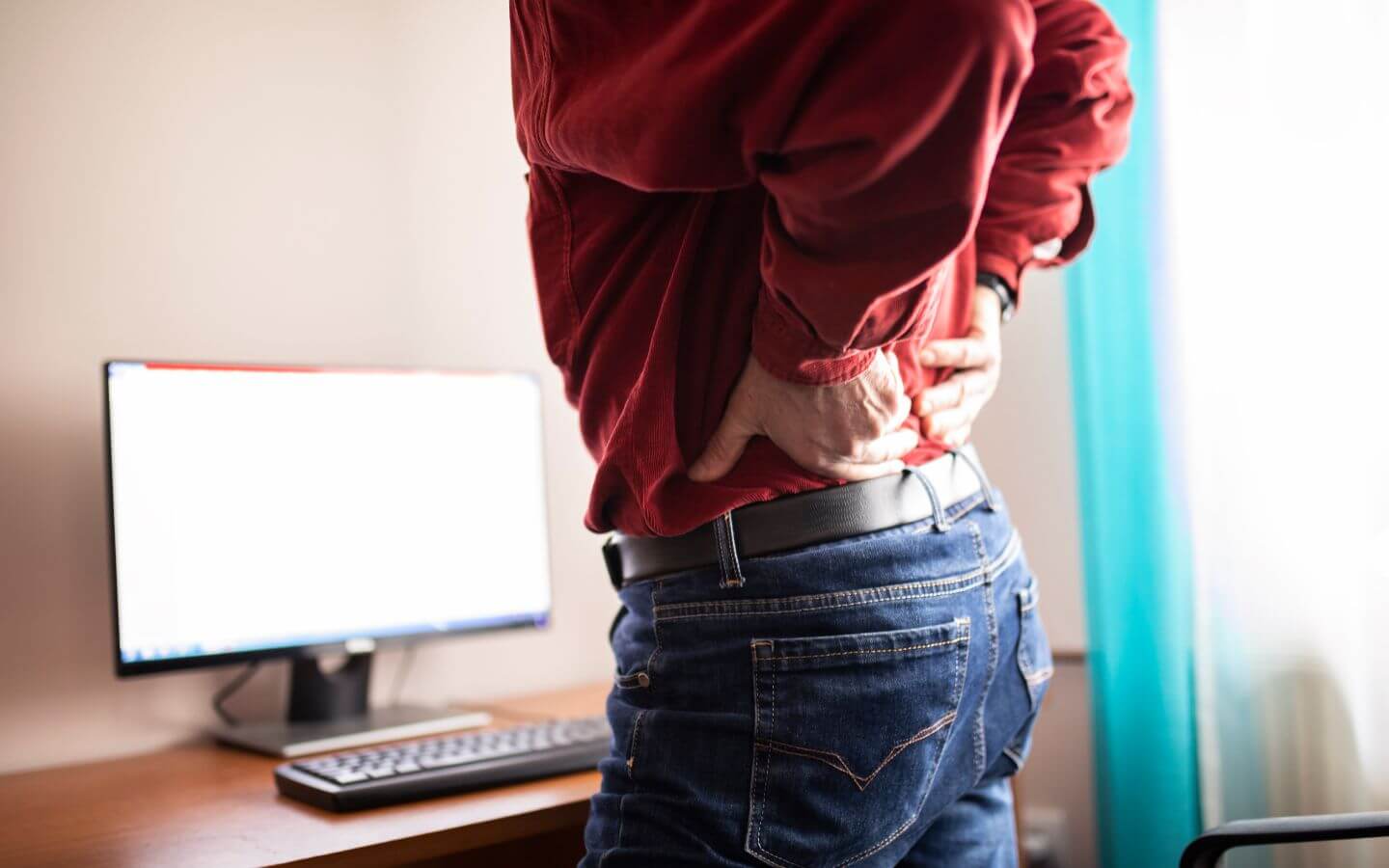
Lumbar Disc Prolapse
Did you know that 4 out of 5 people will suffer from lower back pain during their lives? It is a common reason that our patients come to the clinic for physiotherapy treatment. As physios, we want to help to manage your symptoms and improve your quality of life. Read on to find out what causes this condition and how physiotherapy could help.
What is a lumbar disc prolapse?
Between each vertebra of your spine are spongy, cushion-like discs known as intervertebral discs. These discs provide shock absorption when you run, walk, and jump. They also keep the spine stable, allowing the vertebrae to move. Intervertebral discs have a tough outer shell with a jelly-like centre. The outer shell keeps the jelly in place.
Spinal discs withstand lots of pressure and load but sometimes they become damaged and irritated, and the contents push out. This is known as a disc bulge. In the case of a prolapsed disc, the soft centre pushes all the way through. The lumbar spine or lower spine is the area where a prolapsed disc is most likely to occur, making it a common cause of back pain.
What are the symptoms of lumbar disc prolapse?
The common symptoms of a lumbar disc prolapse include:
- Inflammation and swelling caused by pressure on the spinal cord
- Pain that may be persistent, dull and aching, or sharp
- Numbness, pins and needles, or weakness in one or both legs
- Tightness that radiates down your glutes and thigh
- Discomfort that worsens during activity or movement, or when sitting in the same position for extended periods
- Decreased range of motion and/or stiffness
- Muscle spasms
What causes a lumbar disc prolapse?
This condition is commonly caused by natural wear and tear: the amount of water in the discs decreases as we age, and they become less flexible. It is sometimes caused by a traumatic event such as a fall or accident.
There are also factors that increase your risk of a lower back injury:
- Repetitive manual labour and improper lifting techniques increase your risk. It’s important to lift with your legs instead of your back to protect your spine.
- Being overweight or obese puts more pressure on your spine and increases your risk of injury.
- A sedentary lifestyle and staying seated for long periods also increase your risk of developing a lower back injury.
Can back pain be managed at home?
If you’re experiencing mild to moderate muscle strain, you may be able to take some steps at home to manage your symptoms which include relative rest in the early stages, regular gentle movement to promote healing, drinking lots of water and staying off or at least reducing your alcohol intake and smoking habits.
How can physiotherapy help?
As physios, we are expertly trained to deal with lower back injuries and know when it is necessary to be referred on for further investigations. Most of the time, a disc prolapse can be handled in the clinic. We use a range of passive and active treatment techniques to restore your normal range of motion and function.
Initially, we may use techniques such as deep tissue massage, hot and cold therapy, and hydrotherapy to help relieve pain and relax the muscles.
As your body heals, we may progress to more active techniques including building core stability, teaching proper stretching techniques to increase flexibility, and muscle strengthening to help prevent future flare-ups. We will work with you at every stage of your recovery and provide advice on how to manage your injury at home.
If you are suffering with lower back pain and need help managing your symptoms, come and see us. Give us a call on (08) 9203 7771 or email info@ngp.net.au to make an appointment, and we’ll do our very best to get you back to your very best!
References:
- OrthoInfo (2018). Herniated Disk in the Lower Back. [Online] Available from: https://orthoinfo.aaos.org/en/diseases–conditions/herniated-disk-in-the-lower-back/ (Accessed 19 August 2022).
- Patient (2020). Prolapsed Disc. [Online] Available from: https://patient.info/bones-joints-muscles/back-and-spine-pain/slipped-disc-prolapsed-disc. (Accessed 19 August 2022).
- Spine Universe (2019). Physical therapy for herniated discs. [Online] Available from: https://www.spineuniverse.com/conditions/herniated-disc/physical-therapy-herniated-discs (Accessed 19 August 2022).
